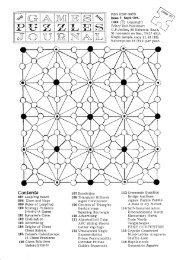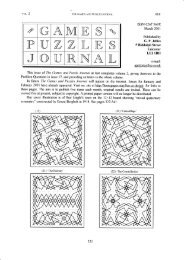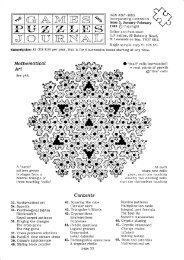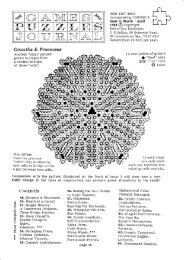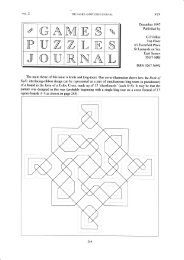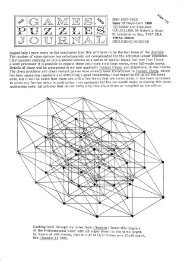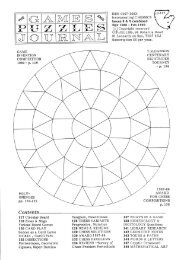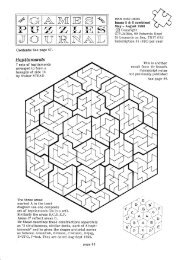Chessics, #28 - Mayhematics
Chessics, #28 - Mayhematics
Chessics, #28 - Mayhematics
Create successful ePaper yourself
Turn your PDF publications into a flip-book with our unique Google optimized e-Paper software.
CHESSICS 28<br />
Special Issue on Chessboard Dissections<br />
By G.P.JELLISS<br />
Aclmowledgement<br />
I am most grateful to Philip J.Stead for allowing me to borrow and photocopy<br />
three manuscript booklets of 'rProblems and Puzzlestrby his father, Walter<br />
Stead, who published and edited ?'Dissectionttitems in the Fairy Chess Review<br />
from February 1953 to February 1957. These booklets include several results<br />
that have not previously been published, as far as I have been able to ascertain.<br />
History<br />
Notes on Dissection Problems have previously appeared in <strong>Chessics</strong> issues<br />
3, 6, 10 and 23. The term (pgly)"rirrg for any piece composed ofGqGres ;oined<br />
edge-to-edge was coined by S.W.Golomb in his Harvard lecture of 1953 (on the<br />
assumption that a domino is a di-omino). The first recorded puzzle using att the<br />
12 different 5-square pieces is No 74 in The Canterbury Puzzles and Other Cur:<br />
ious Problems by H.E.Dudeney, published in 1907. However, the maln Cevelop:-<br />
ment of the subject, using all the pieces from 1 to 6 squares, was in the pages<br />
of The Problemist Fairy Chess Supplement/Fairy Chess Review during the years<br />
19 .Lest6r, H.D.<br />
Benjamin, F.Hansson, W.Stead and others (some of whose names appear later in<br />
the issue). The first book on the subject was S.W.Golomb?s Polyominoes (196b). A<br />
bibliography covering more reeent work, compiled uy w.l,.schLaaf,aplears in the<br />
Journal of Reereational Mathematics_, Vol 16(No 4), 1983-4 (broughtio my notice<br />
No 6, Sept 1gg6 has a nine-page<br />
specialsupp1ementonHexo@aswewenttopress.<br />
Dominoes<br />
How many ways are there of dissecting a board m by n (m<br />
I n) into dominoes?<br />
The following formulae summarise my results on this problem so far:<br />
d(m,n) = [ e(m,s)d(m,n-s) (summed over s = 1 to n)<br />
e(m,n) = [ f(r,n)e(m-r,n) (summed over r = 1 to m)<br />
where d(m,n) is the total number of dissections, e(m,n) is the number without vertical<br />
"fault linest'and f(m,n) the number without vertical or horizontal fault lines,<br />
and d(m,0) and e(0,n) are taken equal to 1.<br />
When m=2 these general results reduce to the well-known Fibonacci relation:<br />
d(2,n) = d(2,n-1) + d(2,n-2)rsince e(1,2) = e(2,2) = 1 and e(2,n) = 0 for n ) 2. This<br />
resultdatesbackatleasttoW.L.PattonAmericanMat@1961(as<br />
cited in Golomb's 1966 book, Polyominoe<br />
The above recurrence relations enable one to calculate e(mrn) and d(mrn) if<br />
one knows f(r,s) for all values of (r,s) up to (m,n). For most small values f(r,s) is 0.<br />
The non-zero values that I have found so far are:<br />
f.(I,2) = 1, f(5,6) = 6, f(5,8) = 116, f(6,7) = L24t f(0,8) = e Z<br />
(though these could do with an independent check). Tne other non-zero cases that<br />
require enumeration arei (r,s) = (2,8), (8,8), (6,9), (8,9), (5,10), (6,10;, (?,10), and so<br />
on. Perhaps someone with a computer could get to work on this?<br />
page 1 38




